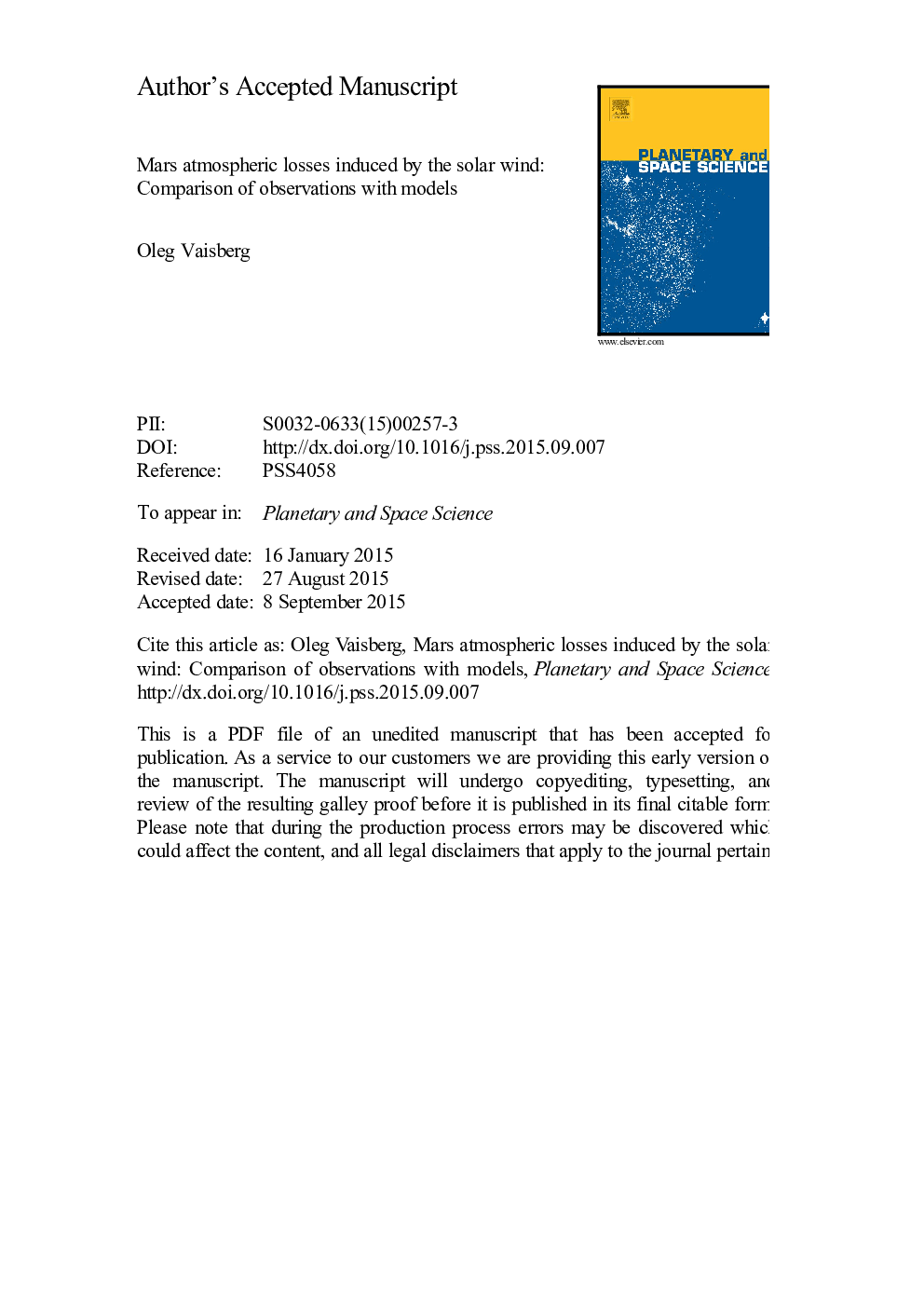| Article ID | Journal | Published Year | Pages | File Type |
|---|---|---|---|---|
| 8142933 | Planetary and Space Science | 2015 | 45 Pages |
Abstract
With new results from Mars-Express on plasma environment of Mars and two new Mars satellites the study Martian atmospheric losses receives new attention. Paper summarizes experimental results concentrating on configuration of Martian magnetosphere and the measurements of planetary ion escape induced by the solar wind. Several plasma populations constituting solar wind induced mass loss have been identified and studied: pick-up ions in shocked solar wind flow and induced (accretion) tail, ions accelerated in the tail current sheet, and outflow of ionospheric ions. Measured ion flux values and calculations of the total escape rate including solar cycle variations are summarized. Several types of simulation of the solar wind with Mars are considered and results of representative models are given and compared with experimental results. These computer models allowed one to much better understand solar wind-Mars interaction. However, there is significant difference between total loss rates obtained from simulation and ones from measurements on the spacecraft. Both measurements and simulation provide significant flux values that are considered as an important factor of mass loss during cosmogonic time of the planet. The origin of each solar wind induced loss component and its contribution to total amount are discussed and compared with relevant computer models. Future progress in experiments and simulation is briefly discussed.
Keywords
Related Topics
Physical Sciences and Engineering
Earth and Planetary Sciences
Geophysics
Authors
Oleg Vaisberg,
